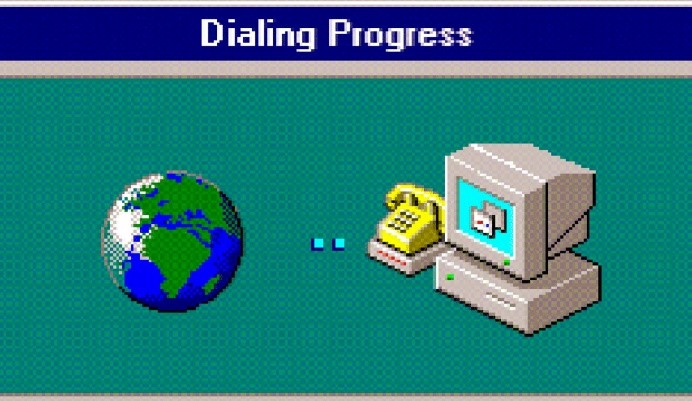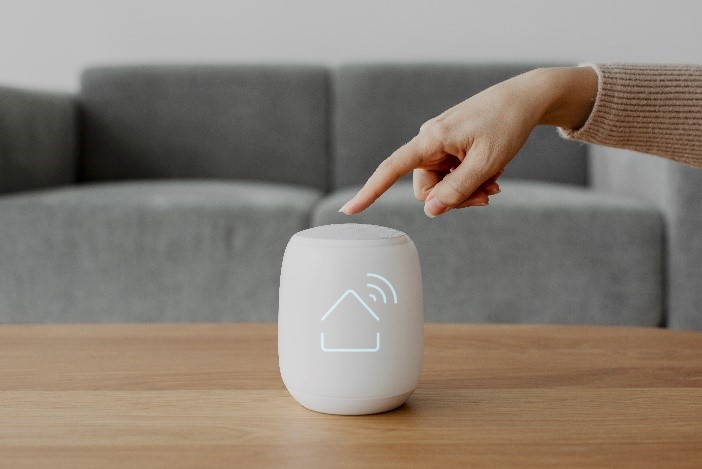We are now living adigital revolution, in which the concept The Internet of Things is very commonand a part of our lifestyle. This has brought many conveniences and advantages,for example, the ability to give new features and functionalities to a deviceinstead of having to replace it. Our devices can evolve with every update andadapt to what we require on demand.
To understand this better, let’s travel a little back in time when theinternet and things were elements that rarely merged. This reading gives anostalgic flashback where we can remember the tone (or sound) when the internetconnection was established on your computer through the telephone line, whenyou made your first searches in the browsers, met people with the sameinterests in other parts of the world and even communicating with friends realtime miles away.

The internet seemed likea safe and magical place. In this way the internet and the computer were partof the same concept and exclusively related to each other; cell phones, lightbulbs, medical equipment, refrigerators, security cameras, televisions,watches, etc., belonged to a different universe. Ah, those were the good olddays, where everything was more complex or simple depending on the point ofview. Even for some readers who have no memory of the “PostModernity” era, the prospect of a life without digital access will surelyseem, ironically, a science fiction story.
The merge of bothconcepts was a process that began with slow, being as in any scientific processtrial and error. Step by step the internet was incorporated and standardized asan essential part in our social development, objects began to include smallcomputers allowing more capacity of connectivity. These devices began toreceive the adjective “smart” because with a network connection theycould send alerts expanding their capabilities and communication tools, at thesame time transmit data. Mainly allowing to improve our interactive experiencewith these objects, as well as to facilitate and/or automate processesvirtually in all branches of industry, science and social. While this happensthese devices track and collect information from users, such as their habitsand preferences creating user profiles that can be used to segment advertisingcampaigns, modify prices through the possibility of purchase, among others.
Suddenly we find ourselves today ina stage that some call “The Age of Hyper Digitalization”, clearlythere is no such dial-up connection tone, and we take for granted theavailability of access and connectivity to networks. At home as in the office,we add devices and trust them, the question is “Why shouldn’t I trustthem?”, if their name clearly says, they are “smart”. The adjective issimply a marketing term that has much better acceptance than if they werecalled “Networked objects with user analysis capabilities”, which is notan attractive name and could be mistrustful.
We have mentioned how convenientInternet-enabled devices can be, however, it is important to keep in mind thatthey also represent serious threats to our digital environment. Unfortunately,many of these members of the Internet of Things (IoT), unlike the most commonoperating systems we use on our computers, lack continuous updates. Letting asystem operate in this way gives cyber attackers the opportunity to takeadvantage of this lack of maintenance, leaving vulnerabilities exposed for longperiods of time, the more devices connected the greater the number of attackvectors. To make this clearer, let’s imagine that the lock on our house door isnot working, it is obvious that we should fix it to eliminate thisvulnerability. What would happen if we decided to procrastinate this weakness?Eventually some attacker will discover it and will probably share his discoverywith other attackers and anyone who knows this “secret” will be ableto access rob us.

It would be very difficult andimpractical to create such updates and patches on our own, but there areactions we can take to prevent these vulnerabilities:
- Buy devices that have a good reputation and from brands that promote good practices of continuous updating.
- Segment our network. For example, if we are at home we should create a network for our trusted devices, another for all those belonging to IoT and finally an exclusive network for guests.
- Preferably these networks should remain hidden and with IP access control lists.
- Not only should we consider the “coolness” of any IoT device that we would like to install at home, but we also need to consider the safety of the environment over aesthetics.
The Internet of Things is becoming an important partof our daily activities, eventually we will be back in the generational loopwhere conceiving of a life before this “smart” devices will seem very “vintage”.We are now facing, individual and collective challenges, centered on theimperative need to grow a digital awareness culture where cybersecurityknowledge is not only a specialized subject, on the contrary, we are all everyday more connected to the network and devices, because of this we need to havethe tools and information to prevent attacks protect our personal data.
